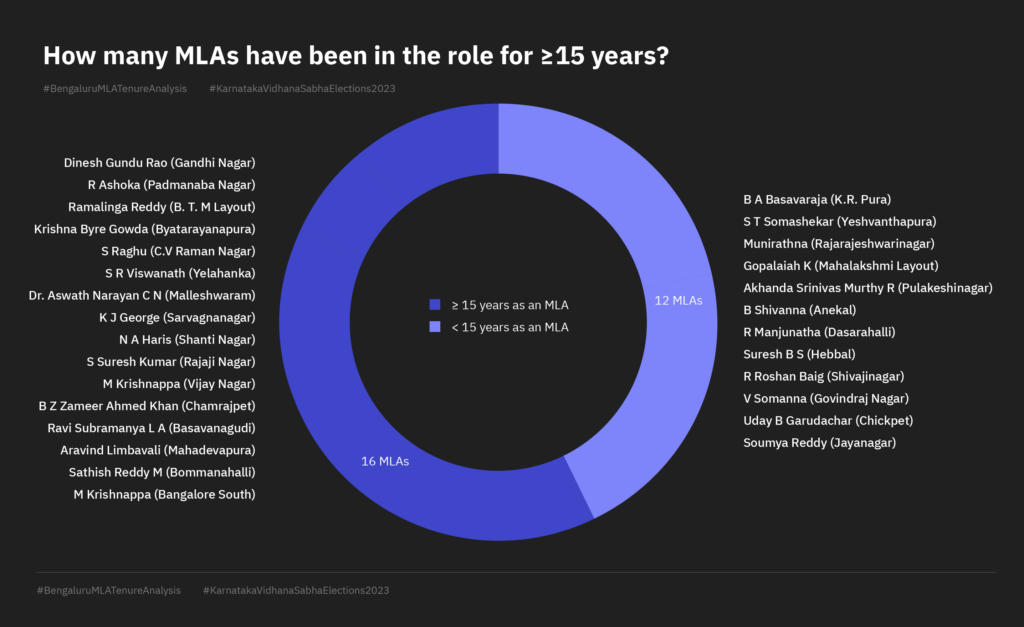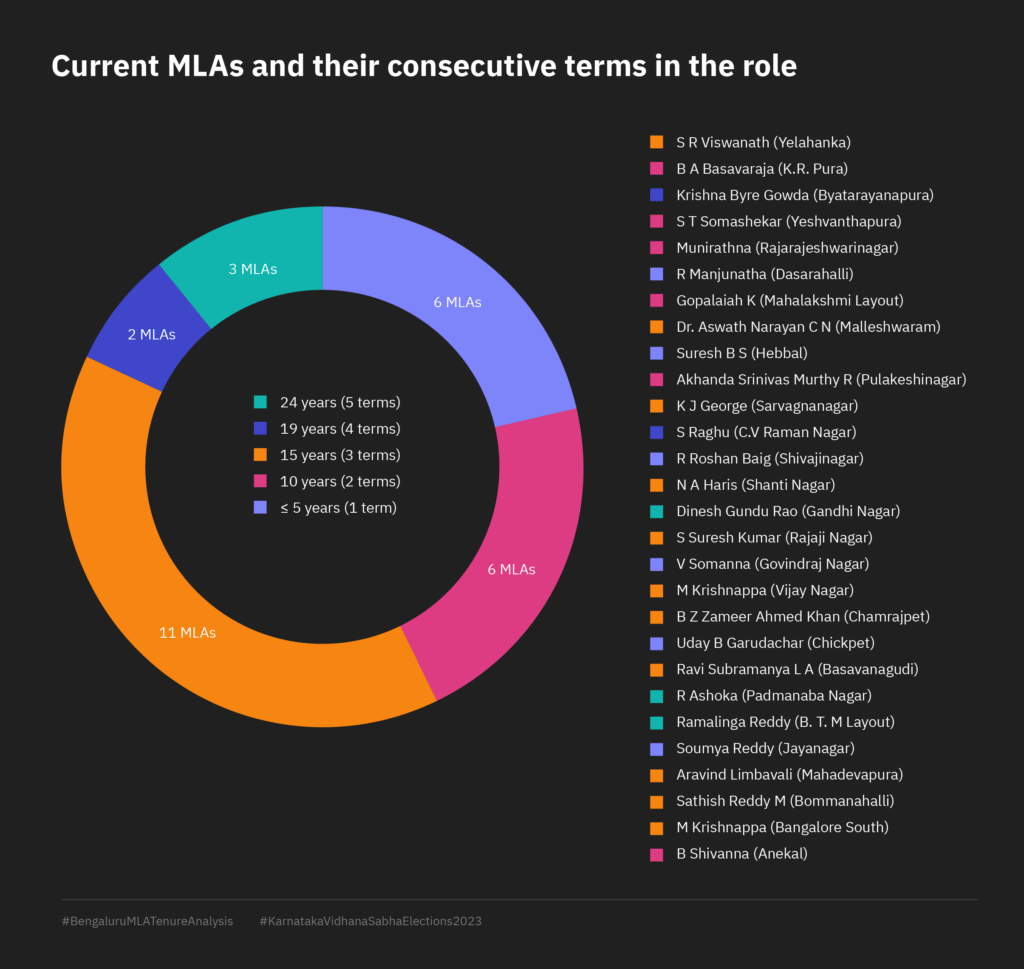A lot has changed in Bengaluru in the last 20 years. Millions of people moved in and made the city their home in the last decade. Lakhs of jobs have been added. Infrastructure too has been added to keep pace with the growing population. Municipal wards went from 100 to 198 to now 243.
A new BBMP Act has been enacted that extended the Mayor’s term from one year to 2.5 years. The BBMP Act also brought in Zonal level Commissioners and Zonal Councils. We saw so many Chief Ministers, Bengaluru Ministers, Commissioners, and Mayors but one thing remained more or less constant–our 28 City MLAs. Most of them have been elected again and again by citizens and have now gained decades of experience representing our city in the state legislature. Many of them have been Cabinet Ministers and even Bengaluru Development Ministers in the past.
Read more: Voting on May 10th? Here’s what you need to know
Some interesting statistics
16 of the 28 MLAs have been elected for more than 3 terms (15 years), giving them a combined experience of 240 years as city MLAs!

Dinesh Gundu Rao, Ramalinga Reddy, and R Ashoka are the longest-serving MLAs in our city. They have been MLAs for almost 25 years!

Just six of the 28 are first-time MLAs. 22 of 28 have been MLAs for ten years!

We deliberately did not get into the political affiliation to convey that the party seems to be a lot less important than the candidate as the electoral record shows. A few MLAs switched their party and still won!

There is just one woman MLA representing our city – Sowmya Reddy from Jayanagar. For a dynamic city like Bengaluru with so many women CEOs, business leaders, educationists, entrepreneurs, activists, and even IAS officers, this is a matter of concern. Women are taking Bengaluru forward, but they are not at all represented adequately in the political ecosystem.
- Only two MLAs in Bengaluru figure in the under 50 list – Sowmya Reddy and Rizwan Arshad
- Sowmya Reddy is also the youngest MLA at 40 years
- The average age of MLAs is 59 years
Here is hoping that in the next five years, the newly elected 28 MLAs will come together and work on bringing positive transformation to our city using the powers given to them by us, the voters of Bengaluru.
More information on MLAs and Candidates for 2023 election can be found here.